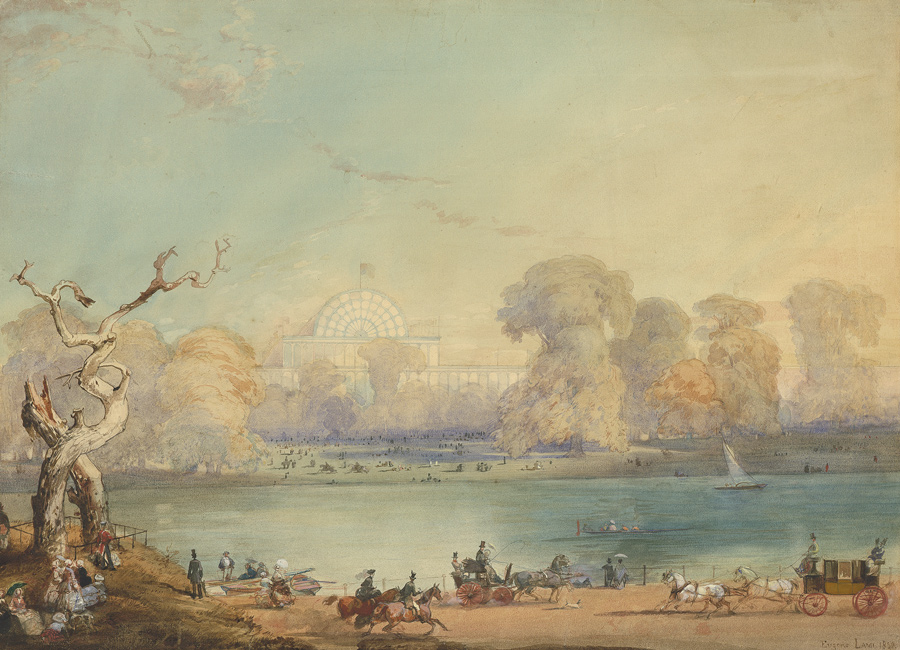Loading the page ...
Eugène Louis Lami
(1800–1890, Paris)
Broad Swathe of Parkland with the Crystal Palace in London. Watercolour on wove paper. 39.6 x 54.5 cm. Signed at the bottom right and dated: “Eugène Lami 1852”.
The first World’s Fair was held in London in 1851. The technical innovations of the Industrial Revolution and the advances in iron manufacture paved the way for the construction of Joseph Paxton’s legendary Crystal Palace, which housed the fair. Initially erected in Hyde Park, the greenhouse-like building impressively symbolised the political and economic power of the British Empire. When the fair was over, the structure was taken down and re-erected with a few alterations in the middle of a large park in Sydenham.
Eugène Lami, the author of the present work, was in London for the second time from 1848 to 1852. Active mainly as a watercolourist, he had already achieved numerous successes. He had been introduced to watercolour painting by Richard Parkes Bonington, whom he had met in 1817 in the Paris studio of Baron Antoine-Jean Gros, a painter of historical scenes. Lami was prized by his contemporaries not just as a master of deft and energetic brushwork, but also because, together with Garvani and Guys, he was one of the most interesting chroniclers of his time. The present composition illustrates his keen talent for capturing the most significant moments of the age with a wealth of detail and a fluent painting technique. The watercolour shows the hustle and bustle outside the Crystal Palace in 1852. Crowds of people are stood on the stretch of parkland outside the colossal iron-and-glass building. The foreground is enlivened by an abundance of figurative staffage, riders on horseback and coaches hurrying past. Lami’s depiction is a compelling eye-witness report of the modern industrial age.
Lami’s authorship of this work has been confirmed by Caroline Imbert.
